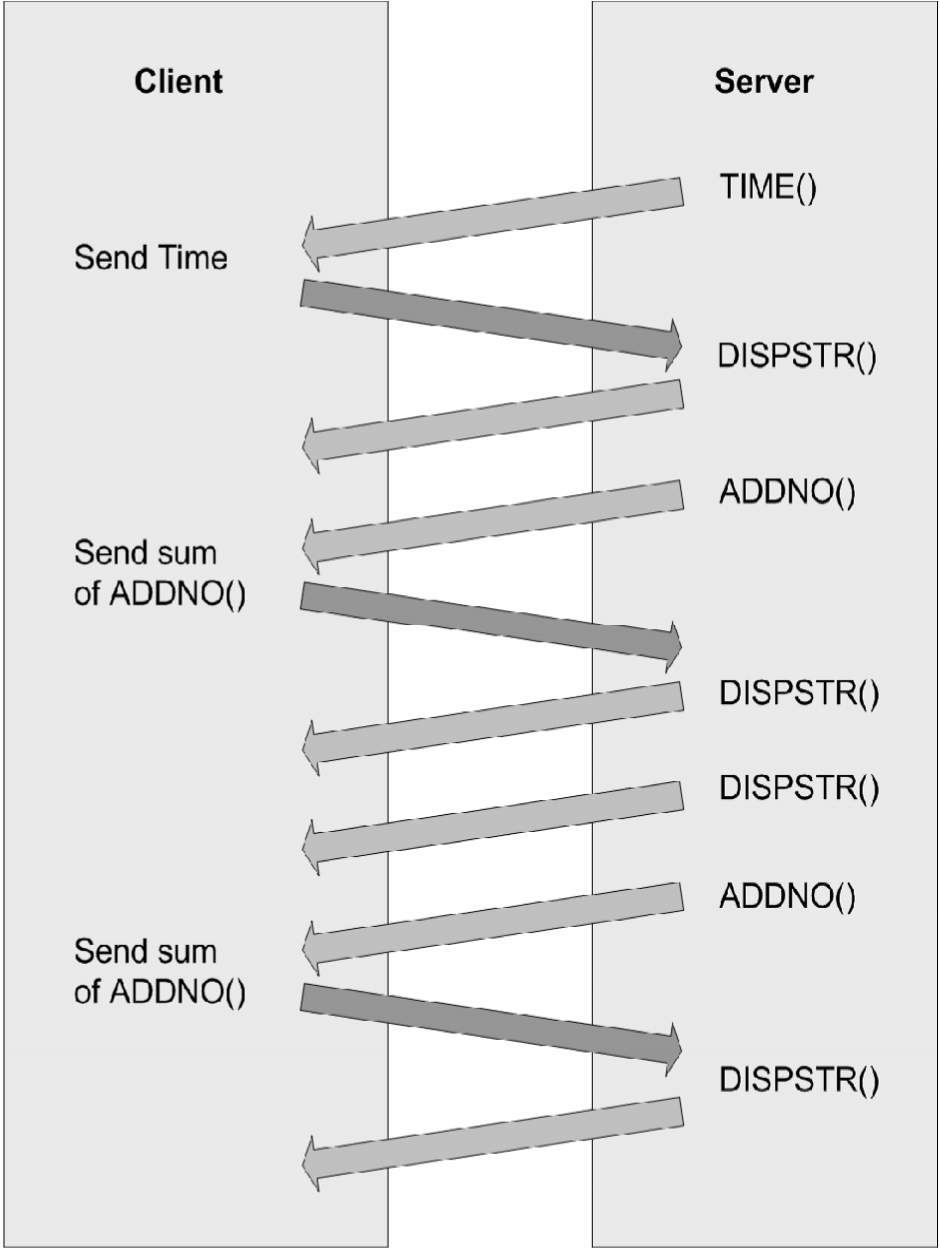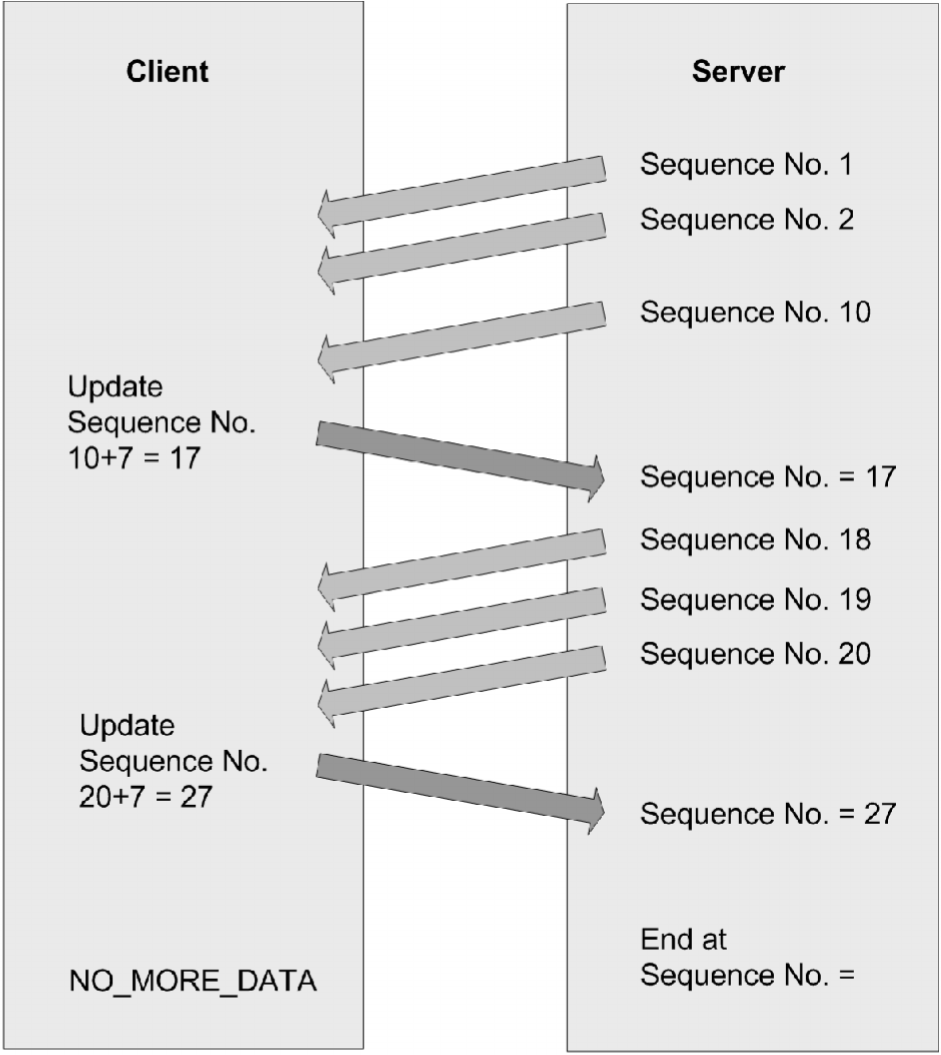Using Example Programs
The example programs included with the Virtual Channel SDK are buildable, working virtual channels. Use these examples to:
-
Verify that your environment is suitable by building a known working example program.
-
Provide working examples of code that can be modified to suit your requirements.
-
Explore the features and functionality provided in the Virtual Channel SDK.
Each of these example programs comprises a client virtual driver and a server application. The server-side application is run from the command line within an ICA session. A single virtual channel comprises an application pair.
The example programs included with the Virtual Channel SDK are:
-
Ping: Records the round-trip delay time for a test packet sent over a virtual channel.
-
Mix: Demonstrates a mechanism to call functions (for example, to get the time of day) on a remote client.
-
Over: Simple asynchronous application that demonstrates how to code an application where the server must receive a response from the client asynchronously, and where the type of packet being sent to the client is different from the type received.
Ping
Ping is a simple program that records the round-trip delay time for a test packet sent over a virtual channel. The server sends a packet to the client and the client responds with a packet containing the time it received the original packet from the server. This sequence is repeated a specified number of times, and then the program displays the round-trip time for each ping and the average round-trip delay time.
For this example, there is no significant difference between a BEGIN packet and an END packet. The two types of packets are provided as an example for writing your own virtual channel protocols.
This program demonstrates:
-
How to write a manifest file so that Citrix Workspace app for Android can detect and bind the service.
-
How to send information to a server-application (in this case, the number of times to send packets to the client).
-
How to transfer data synchronously. The sequence of events is:
{SrvWrite, ClntRead, ClntWrite, SrvRead} {SrvWrite, ClntRead} {...}. The server waits for the client to reply before sending the next packet.
Packet format
The following packet is exchanged between the client and the server.
Byte 0-1 uSign; // Signature
Byte 2-3 uType; // Type, BEGIN or END, from server
Byte 4-5 uLen; // Packet length from server
Byte 6-7 uCounter; // Sequencer
Byte 8-11 ulServerMS; // Server millisecond clock
Byte 12-15 ulClientMS; // Client millisecond clock
<!--NeedCopy-->
Mix
Mix demonstrates a mechanism that you can use to call functions on a remote client (for example to get the time of day). This program demonstrates an extensible scheme for making function calls from the server to the client that allows the server to specify when it expects a response from the client and when it does not. This method can increase performance, because the server does not have to constantly wait for a reply from the client.
The server calls a series of simple functions:
-
AddNo: Add two numbers and return the sum as the return value. -
DispStr: Write a string to the log file. There is no return value (write-only function). -
Gettime: Read the client time and return it as the return value.
The actual implementation of these functions is on the client side. The server conditionally waits for the response from the client, depending on the function being run. For example, the server waits for the result of the AddNo or Gettime function, but not the write-only function DispStr, which returns no result.
Packet Format
Byte 0-1 uType // Packet type
Byte 2-3 uFunc; // Index of Function
Byte 4-7 uLen; // Length of data
Byte 8-9 fRetReq; // True if return value required
Byte 10-13 dwRetVal; // Return Value from client
Byte 14-15 dwLen1; // length of data for \#1 LpVoid
Byte 16-17 dwLen2; // length of data for \#2 LpVoid
<!--NeedCopy-->
The data consists of the structure above followed by the arguments to the function being called. uLen is the total length of the data being sent, including the arguments. DwLen1 is the length of the data pointed to by a pointer argument.
Sequence of events
The Mix program demonstrates the following sequence of events. See the graphic below.
This figure illustrates the sequence of events that occur when you use the Mix program, starting at the top.

Over
The Over program is a simple asynchronous application. It demonstrates how to code an application in which the server must receive a response from the client asynchronously, and the type of packet being sent to the client is different from the type received.
When the Over program begins, it:
-
Spawns a thread that waits for a response from the client.
-
Begins sending data packets with sequence numbers to the client.
-
(After sending the last packet of data) sends a packet with a sequence number of
NO_MORE_DATA, and then closes the connection.
The client receives packets and inspects the sequence number. For every sequence number divisible by 10, the client increases the sequence number by 7 and sends a response to the server. These numbers are chosen arbitrarily to demonstrate that the client can asynchronously send data to the server at any time.
The packet type used to send data from the server to the client is different from the packet type used to receive data from the client.
Packet Format - From Server to Client
Byte 0-1 uSign; // Signature
Byte 2-3 uType; // Type, BEGIN or END, from server
Byte 4-5 uLen; // Packet length from server
Byte 6-7 uCounter; // Sequencer
Byte 8-11 ulServerMS; // Server millisecond clock
<!--NeedCopy-->
Packet Format - From Client to Server
Byte 0-1 uType; // Type OVERFLOW_JUMP from client
Byte 2-3 uLen; // Packet length from client
Byte 4-5 uCounter; // seqUencer
<!--NeedCopy-->
Sequence of Events
This figure illustrates the sequence of events that occur when you use the Over program, starting at the top.

Building Examples
Building a server-side example using Nmake
Examples of the latest server-side executables have been provided for testing. You can download the latest Windows Virtual Channel SDK to develop the server-side component.
Building a client-side example
Citrix provides APKs for the three sample virtual drivers. You can build the APKs yourself. The packages for sample virtual drivers are built using Gradle.
Environment information of sample code:
-
Gradle version: 2.10.
-
Gradle build tool version: 21.1.2.
-
Android SDK version: 21.
-
JDK version: Oracle JDK 7.
Building steps:
-
Sets
\$JAVA_HOME, \$ANDROID_HOME, \$GRADLE_HOMEto the directory that you installed. Adds\$JAVA_HOME and \$GRADLE_HOME/binto\$PATH. -
Opens a command prompt in the root directory of a sample package.
-
Runs
gradle assemblein the command prompt. -
When a build completes, you can find the APKs under
./app/build/outputs/apk.
The APKs must be installed to your device before an ICA session launches.
Running an Example Virtual Channel
Examples of the latest server-side executables have been provided for testing.
-
On a client installed with the client-side example, connect to a server running Citrix Virtual Apps and Desktops with the associated server-side example.
-
Within the ICA session, run the server-side executable.
The server-side example queries the client-side virtual driver, and then displays the driver information. Use the -d parameter to display detailed information. For Ping only: CTXPING sends PingCount separate pings. PingCount has a default value of three, but can be set in the \[Ping\] section of the Module.ini file. Each ping consists of a BEGIN packet and an END packet.